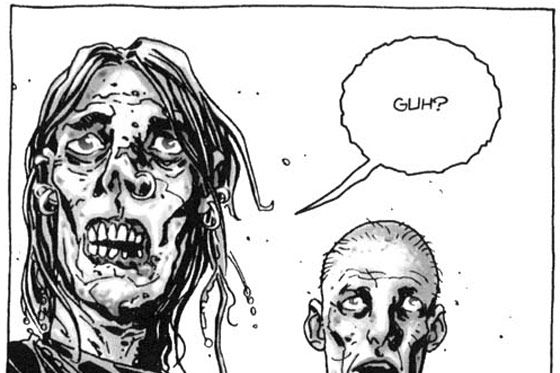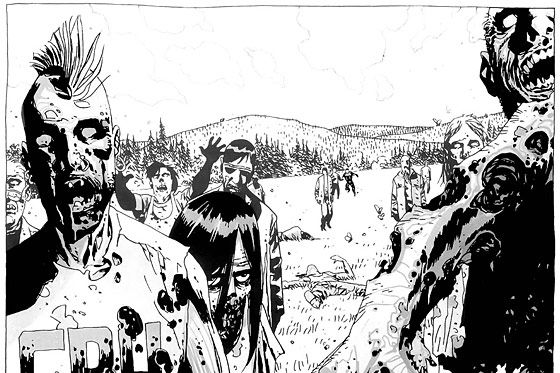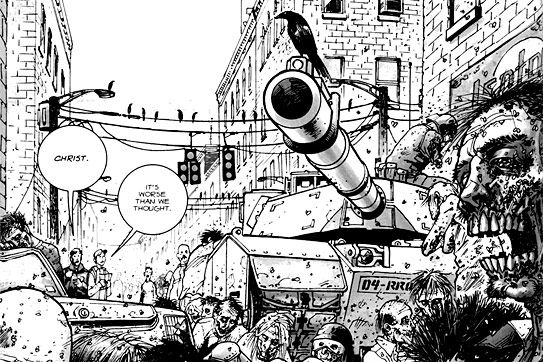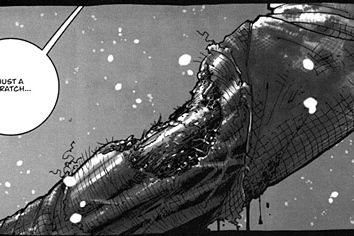Premiering this Sunday night is AMC’s zombie-apocalypse show The Walking Dead, the Frank Darabont–created TV adaptation of Robert Kirkman’s graphic novels. And as we’ve learned in countless movies, though, not all zombies are created equal. George Romero’s are generally the accepted standard for zombie behavior, but Kirkman took some liberties with his undead. So, if you should ever find yourself a character in The Walking Dead, what things would you most need to know? Herewith, Vulture’s primer on Kirkman’s zombies. Minor spoilers ahead!
Decayed flesh, falling-off arms, unmanageable hair — Kirkman’s zombies are totally disgusting, even by zombie standards. That his comic is in black and white helps mitigate their grossness, but only a little. And they look really gross on TV.
Unlike the running ones in 2004’s Dawn of the Dead, Kirkman’s zombies are extremely slow moving (as George Romero once explained: “The dead can’t run. Their ankles would break”). Small packs of them can usually be outrun on foot or bicycle.
Kirkman’s zombies come in two main types: The Roamers are the ones you’ll see shuffling the streets in search of some hearty innards. These are generally less dangerous, since they’re easy to see, but they never seem to tire or need sleep, so they can follow their prey for days.
… And Lurkers are the sneaky ones who chill out in the shadows, waiting for a loud noise or the scent of a non-zombie to alert them to something edible.
Like we said, zombies are slow, so one or two are easy to escape — but if you get surrounded, you’re probably a goner.
As in most zombie movies, a chomp from the undead will turn you into one of them. In extremely lucky cases, amputating the affected limb can save you. But since this is unlikely, you’d do well to avoid contact with zombie teeth.
Spoiler: Actually, you’re already a zombie. In the comic, after several characters die of non-zombie-related causes and still come back to life, it becomes clear that everyone has the zombie virus. The sickness lies dormant until you die, regardless of the cause, and turns your dead body into a festering, flesh-hungry shell of a human.
Sure, guns are helpful in dispatching zombies, but you’ll probably want to stick to quieter weapons when defending yourself against just a few stragglers: Unsilenced shots attract nearby Lurkers and faraway Roamers.
Zombies are usually mostly blind (or missing eyeballs altogether), but their noses still work. If you can stomach it, they can be fooled if you douse yourself in some zombie guts.
If you can somehow lure a zombie into an icebox or to Antarctica, you’re home free: Presumably because they no longer have blood running through their circulatory systems, zombies freeze quickly in the cold.
But they can form a gross pile of zombie bodies that others can walk over. They can also gradually push a fence over en masse. But in general, trees and ladders can be your friends.
Some characters in Kirkman’s comic are able to keep pet zombies by chaining them up and feeding them human limbs. Most who try this, though, learn the hard way that even the most beloved zombie relatives can turn on you if they get hungry.
While their muscular, cardiovascular, and digestive systems are pretty much kaput, zombies’ nervous systems are still very much alive. To kill them, you’ll have to smash their brains. And no half-ass decapitations — a severed head can still bite you.


















